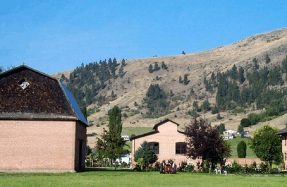LYTTON A Tale of Two Museums
No matter how many times I drive the Fraser Canyon, by the time I reach the first tunnel at Yale, I’m gobsmacked. Boiling waters, sheer granitic skyscrapers, and so much history are compressed into this craggy corridor. The canyon has supported life for Indigenous peoples at villages and spectacular fishing sites since time immemorial. Nlaka’pamux, Stó:lō, Stl’atl’imx, and others sought guardian spirits in its sacred places. Later came explorers, fur traders, and the miners who chased the “golden butterfly” from Hill’s Bar to Boston Bar and beyond with supplies carried on a gravity-defying Cariboo Wagon Road. Next came the Canadian Pacific Railway, forging steel and political links to Canada. Some 17,000 Chinese labourers carved out roadbeds
You’re reading a preview, subscribe to read more.
Start your free 30 days

